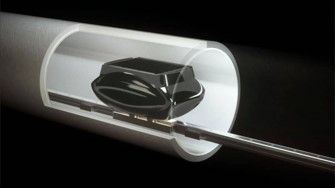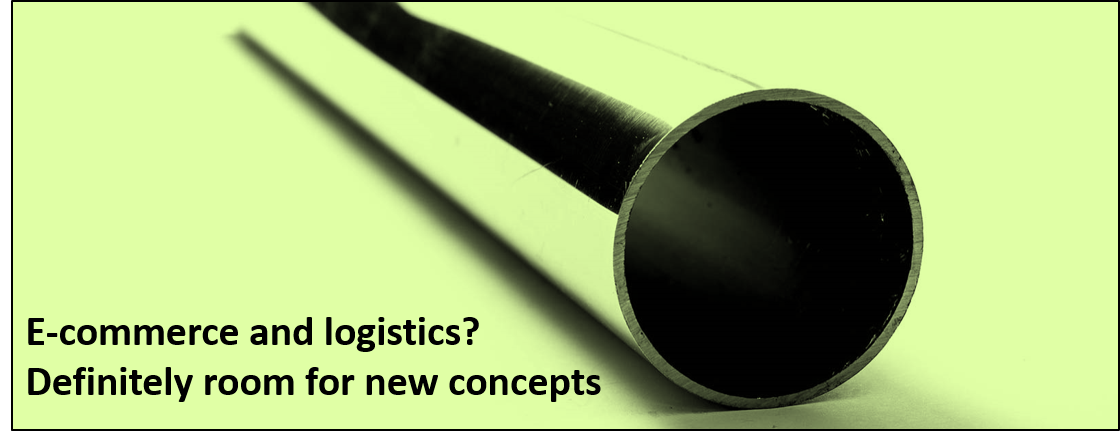E-commerce will continue to grow, and that at the expense of traditional retailing. Online shopping will soon be the norm for shopping. The supply chain needs to adjust to this.
One man’s convenience is another man’s stress
One of the consequences of us shopping from home, or on-the-go using the phone, is a stressed logistics system. The result is visible, congested traffic and overloaded bottle necks.
The logistic system supporting online shopping can be divided in two steps. The first leg is from producer to a Customer Fulfillment Centre or CFC. The second is from the CFC to consumer. This is a very different supply chain from the traditional and we have all noticed the growing number of lorries on the roads. New innovative delivery methods are invented and tried out. Robots, drones and electrical vehicles of all kinds, self-driving and not. These solutions are mainly focused on the last mile delivery, that is from the customer fulfilment centre (CFC) to the consumer. This “last mile” transport can be organised in various ways, it can be home deliveries or to a pack-station at offices, supermarkets or in train stations.
Remarkable last mile solutions

Drones
Amazon introduced the concept of drone deliveries in 2016 and shared a few months ago a project update. They are still developing the concept and now showed us an increasingly sophisticated flying vehicle capable to deliver up to 90% of the packages they are delivering today. And safely too.
Wings has a similar solution but with a different spin. They offer the same service, drone deliveries, but instead they link consumers to a range of local stores. An order is placed, and the drone picks up goods from the specified shop and delivers, all the way home. On trial in Australia, Finland and in the US.

Robots
Some drones are instead found moving around on the ground. In the UK, Tesco has started to deliver groceries using robots. A pilot test is located to Milton Keynes where Tesco is working with Estonian based robotics company Starship Technologies. A low 6-wheeled cart carries parcels, meals and groceries delivering to homes within a 3 km radius.
In the US Kiwibot is doing very much the same, home deliveries using robots, but in this case the 4-wheeled carts are bringing food from local restaurants. Also this is a concept in the building but it is inspiring to see all the creativity coming out to meet the demand for fast home deliveries.
The first leg of the supply chain
The above are solutions for shorter distances, the second leg of the supply chain. To get the goods from the producer to the CFCs lorries, train and boats are used, creating traffic overflow. That is until now. Until we heard of Magway.

British Magway has come up with the idea of building a network of pipes around the country. This planned grid of tubes, with a diameter of 90 cm, is supposed to carry goods, beneath and above ground. Instead of using trucks on the road, cargo will be sent around in pods in these tubes fitted with rails and powered by magnetism. An electric current will run through a track in the pipe, creating a magnetic wave that will drive the packed pods at speeds of 80 km/h.
Magway is an example of sustainable new thinking for a new era where consumers want their goods and that immediately. The normal distribution chain with goods-in-cases-and-on-pallets will with increasing online shopping soon not be the norm anymore.
Online shopping means that products are sent on their own or together with random other products. New methods are needed, and Magway has come up with a radical e-commerce delivery system that will reduce traffic on the roads and ease traffic congestion. The system promises reliable and predictable deliveries to CFCs and to a lower cost.
The first route planned is an 80 km route from northwest London to Milton Keynes, where large numbers of distribution centres are located. Already this year a 2 km test track will be built and tested.
This is an interesting period in time when online shopping is growing very fast and shoppers are expecting immediate deliveries. New solutions are really needed to gear up the supply chain for the new needs with lots of room for new thinking and developing of new concepts. All the above mentioned enterprises are going to be exciting to follow and I will absolutely keep an eye on all of them.



